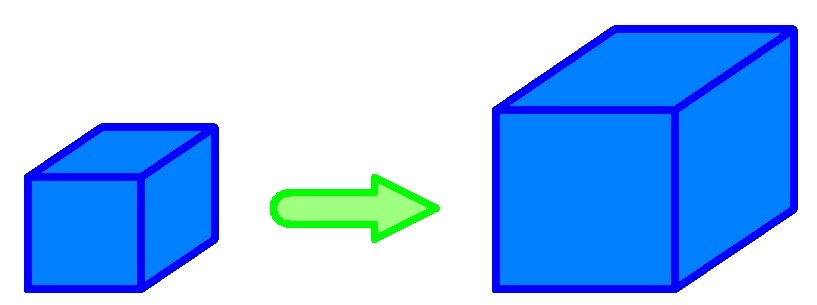Surface area
 If the dimensions of a cube is increased by 40%, then what is the increased in surface of this cube (in percentage)?
If the dimensions of a cube is increased by 40%, then what is the increased in surface of this cube (in percentage)?
The answer is 96.
This section requires Javascript.
You are seeing this because something didn't load right. We suggest you, (a) try
refreshing the page, (b) enabling javascript if it is disabled on your browser and,
finally, (c)
loading the
non-javascript version of this page
. We're sorry about the hassle.
2 solutions
Since we are asked about increase in percentage. We can plug in numbers.
Suppose the side of the small cube is 1 0 , then its surface area is 6 × 1 0 2 = 6 0 0 . Each dimension is increased by 4 0 % ⟹ each new dimension is 1 0 × 1 . 4 = 1 4 .
The surface area of the new cube is 6 × 1 4 2 = 1 1 7 6 .
Thus, the percent increase is: o r i g i n a l d i f f e r e n c e × 1 0 0 % = 6 0 0 1 1 7 6 − 6 0 0 × 1 0 0 % = 9 6 %
let s be the surface area of the original cube and S be the surface area of the bigger cube
Since the two cubes are similar, we have
S s = ( 1 . 4 x ) 2 x 2 = 1 . 9 6 x 2 x 2 = 1 . 9 6 1 ⟹ S = 1 . 9 6 s
Therefore,
% i n c r e a s e d i n s u r f a c e a r e a = ( 1 . 9 6 − 1 ) ( 1 0 0 % ) = 9 6 %